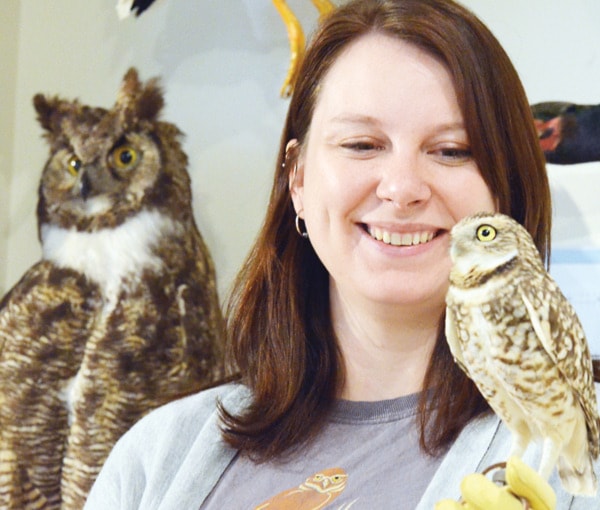All this month the happenings at the Penticton Museum and Archives will be for the birds.
Specifically, the red-listed burrowing owl will be the beneficiary of donations from the current wildlife exhibit at the museum which is part of the celebrations for the 100th anniversary of the facility.
Last year the Burrowing Owl Society of B.C. opened its third facility near Oliver with the goal of re-establishing self-sustaining populations of the tiny bird of prey.
Standing at about 10 inches in height on its long legs and weighing in at about six ounces, the owl was once prolific in the four most western provinces.
Due largely to habitat destruction and chemical poisoning, the species has been eliminated from B.C. since the 1980s.
Elsewhere there are still low numbers of native owls where they are still officially classed as endangered.
In 1990 a group of volunteers headed by Mike Mackintosh began work to re-establish the species in the grasslands of the province.
Two years later, nine captive-bred owls were released and the Burrowing Owl Conservation Society of B.C. formally came into being.
Since then the society has released 100 of the birds annually in the Nicola Valley, and the organization now has a new location north of Oliver with the intent of doing the same thing in the Okanagan.
The site of the facility is not far from the South Okanagan Rehabilitation Centre for Owls near Vaseux Lake, the third one of its kind in the province.
It opened in the spring of last year, and in addition to the breeding program, members also work to educate people on both sides of the border about the plight of the owl.
The birds usually migrate to the southern United States and as far away at Mexico each fall.
Unlike most of their relatives, the burrowing owl nests on the grounds using dens dug by other animals and more recently those made by humans.
A decline in the number of burrowing animals, often as a result of poisoning and hunting of those species, significantly reduced the natural dens.
Currently at the society’s three locations there are about 130 burrowing owls, with hopes of increasing those numbers in the coming years.
“Along with soft-release caging, the society has been successful in releasing and producing wild-born burrowing owls,” said Lauren Meads, site co-ordinator for the South Okanagan location.
“Biologists monitor the released owls and their offspring, each owl has a USFW band on its left leg and a green/black (alpha numeric) band on its right leg (which is specific to B.C.).
“With these bands and the future use of better tracking systems, we can follow the owls on their migration route which will help with their continued success in B.C.”
That includes an expensive mixed diet of chicks (chicken) and mice.
“As we move into the South Okanagan, we are working with more partners to incorporate additional suitable habitat in which to release the burrowing owls,” said Meads.
For more information on the program, to volunteer or assist through donations, visit the website www.burrowingowlbc.org.
